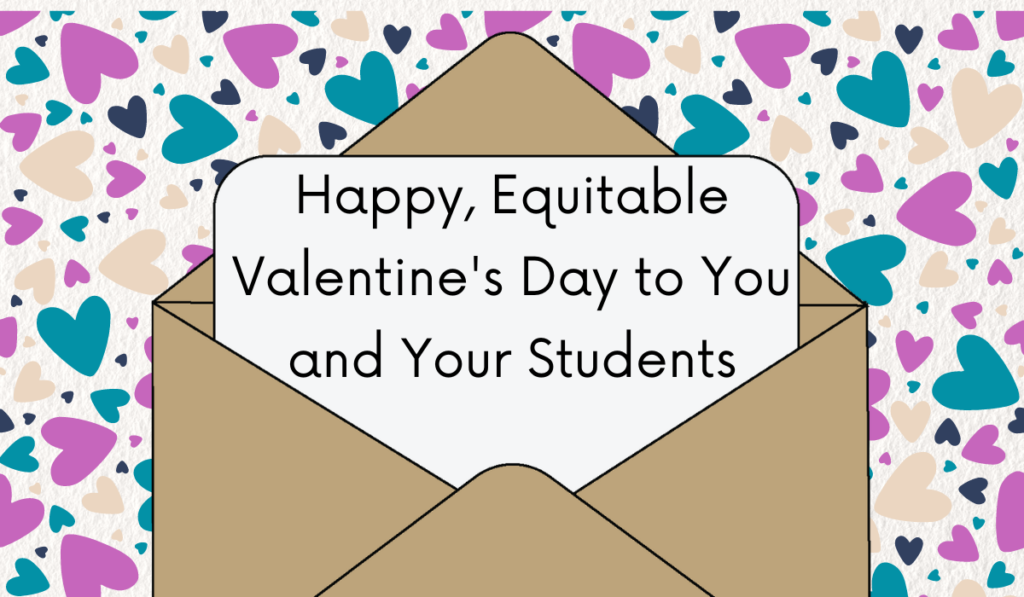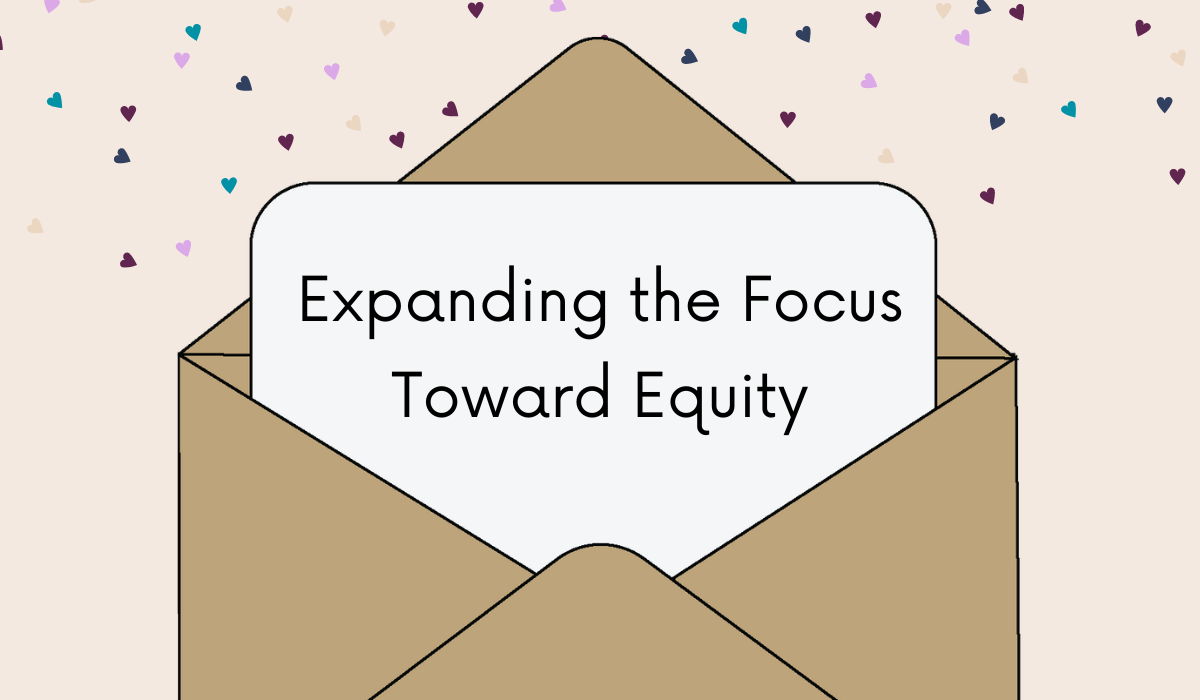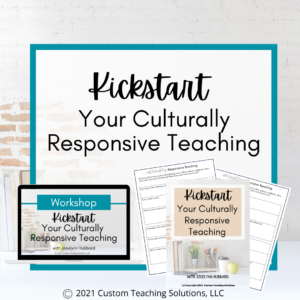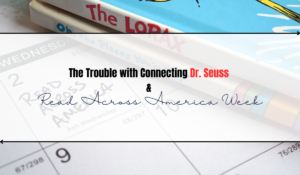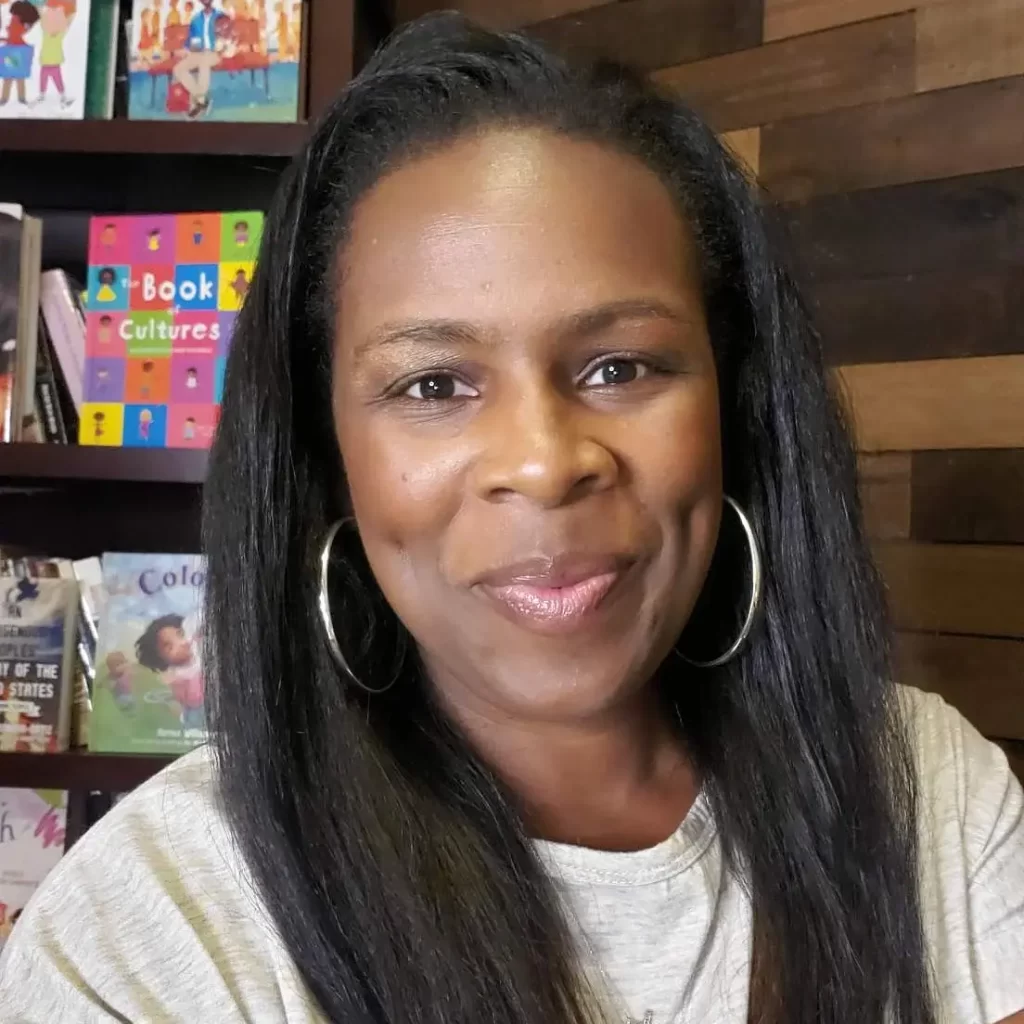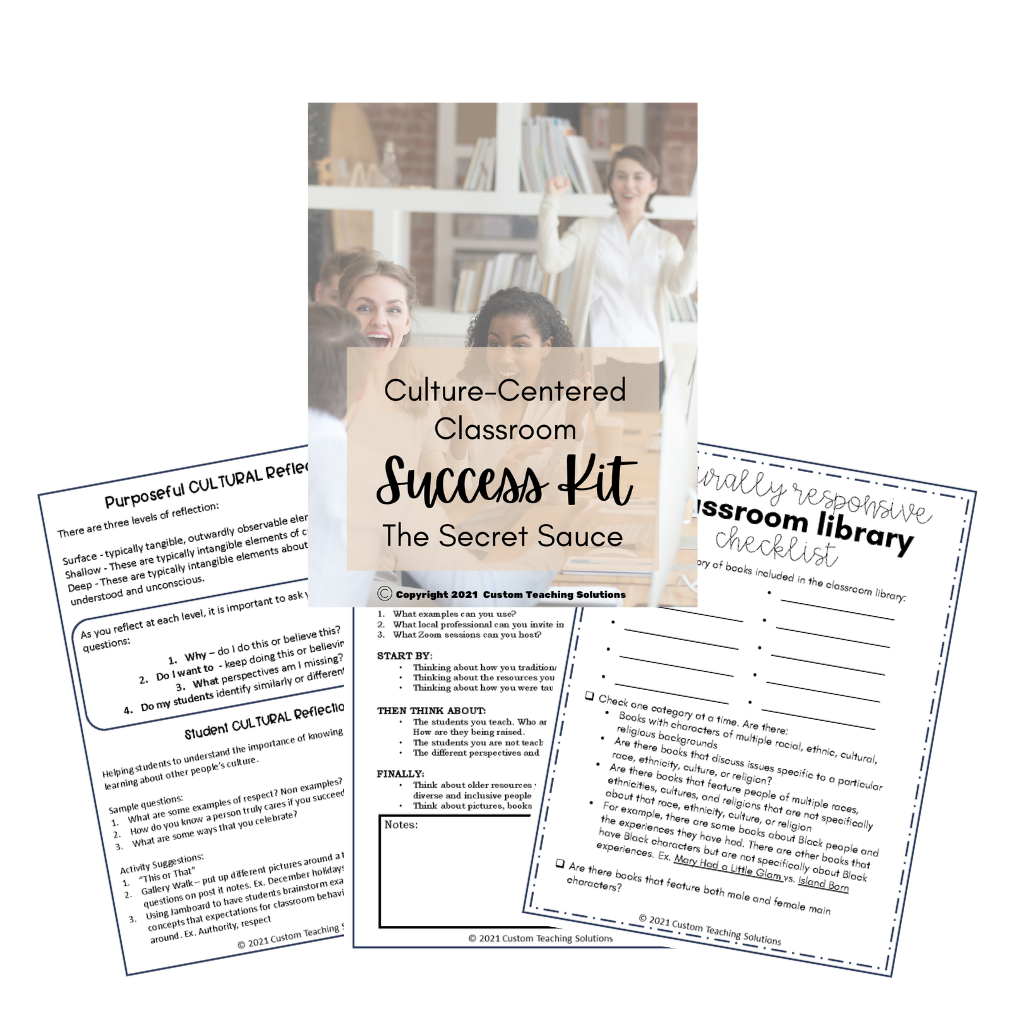During a recent coaching session an educator asked me, “Jocelynn, how do we create a happy and equitable Valentine’s Day experience for all students?”
This is a complex and nuanced question to answer because there are several things to keep in mind. Firstly, all of your students do not celebrate this holiday. Whether for religious reasons or personal convictions, a student may not celebrate Valentine’s Day. Secondly, there are some students that may not be able to participate in a card, gift, or candy exchange because of financial limitations. Thirdly, holidays can be a trigger for trauma for some students. A family member or friend might have passed away during this time, or some other major life shift may have taken place. This may put the student into an emotionally vulnerable space.
There are definitely additional points to consider, but these are three heavy hitters.
Even with these points, the educator and I talked about some of the really amazing projects and experiences created during this time. One in particular is the ability to intentionally express love and appreciation for people in your life in a variety of ways; poems, flowers, candy, cards. In many elementary schools and a few middle and high schools, students are encouraged to create a Valentines Day box or bag to collect the tokens of love and appreciation from classmates and teachers. Some students truly shine during this time because they are artistic and creative.
So here are three considerations/suggestions I shared during my coaching session:
Expanding the Focus toward Equity
#1 – Regarding the Valentines Day boxes or bags – Creating these boxes and bags is clearly an experience that is enjoyed by many students and allows for a bonding experience for caregivers and students. I don’t think it should be eliminated, but I do think it could be revamped. Because this is a holiday that can be centered around love and appreciation for the people we care about and self-love, let’s connect it to that larger theme and create a culture building opportunity for the school. Let’s make this an interdisciplinary learning experience.
Equitable Valentine’s Day – ELA Lesson Idea
In reading/ELA students can focus on reading books and poetry, etc that talk about what love is and how it shows up in different ways. There can be discussions of healthy and toxic love. Students can also talk about self-love and why it is important to prioritize self-care and mental health. Finally, there can be an exploration of how we show love and appreciation at the school – for our classmates, teachers, and staff.
Equitable Valentine’s Day – Social Studies Lesson Idea
In social studies students can learn about the history of the Valentine’s Day holiday, but also learn about where and how it is celebrated across the world. Students can discover other holidays or times of the year that people set aside specifically to celebrate love and show appreciation. Depending on your specific content area under the umbrella of social studies, you can focus on how appreciation or the lack of appreciation has led to x,y, or z event or outcome. For example, after wars soldiers have been appreciated and honored with parades and ceremonies. To show appreciation for teachers and health care workers, many stores offer discounts. Finally, have students reflect on their learning and think about how regardless of age, gender, race, religion, geographic location, people enjoy showing and receiving appreciation and love.
Equitable Valentine’s Day – Math Lesson Idea
In math students can learn about the economic impact of holiday spending and budgeting. How does spending on the Valentines Day holiday compare to that of other holidays? Students can think critically and collaboratively about how they can show appreciation and love without spending a dime, but also how they can appropriately budget for spending money if they choose. Students might also consider the statement, “It’s the thought that counts.” Finally, have students work collaboratively to create a product, service, or package to show appreciation and love. How much will the endeavor cost to produce? How much will it cost the consumer? Have them outline why their creation will allow people to show genuine appreciation and love for another person or themselves?
Equitable Valentine’s Day – Science Lesson Idea
In science students can learn about the anatomy of the heart and the hormones that impact our feelings of love and appreciation. Or maybe you share information about sweets and candy or flowers, objects typically used to show love or appreciation. This is a great lesson to connect to the plant life cycle. Students can learn about some of the most popular flowers, the climates in which they grow and thrive, what they mean, how long they live when placed in a vase, and some ways to preserve them. Students can also learn about chocolates and candy. What are the ingredients? How does sugar impact the body? Finally, have students reflect on their own love language. Do they enjoy receiving flowers or candy? Why or why not? What would they appreciate more?
Equitable Valentine’s Day – Art Lesson Idea
In art, students can create boxes or bags to collect love and appreciation tokens from classmates and teachers. Make it clear to students, however, that they are still encouraged to create a box/bag with caregivers. This provides an opportunity for every student to create a box/bag, but allows them to still create one with their caregiver or on their own.

Appreciation & Love Day
#2 – Focusing on an appreciation/love day might be something that more students can get on board with vs. Valentine’s Day specifically. I have not talked with anyone from different faith backgrounds so I cannot confirm this for you, but asking the question or presenting the idea is a great way to get stakeholder feedback and involvement.
Focusing on an appreciation/love day is a great way to broaden the scope and maximize the potential for lasting impact on your classroom and school culture. Part of creating a welcoming and inclusive learning environment is about appreciating and respecting different people and perspectives even if you do not subscribe to them yourself. Help students to understand that concept more deeply and fully by expanding the conversation into different subject areas.
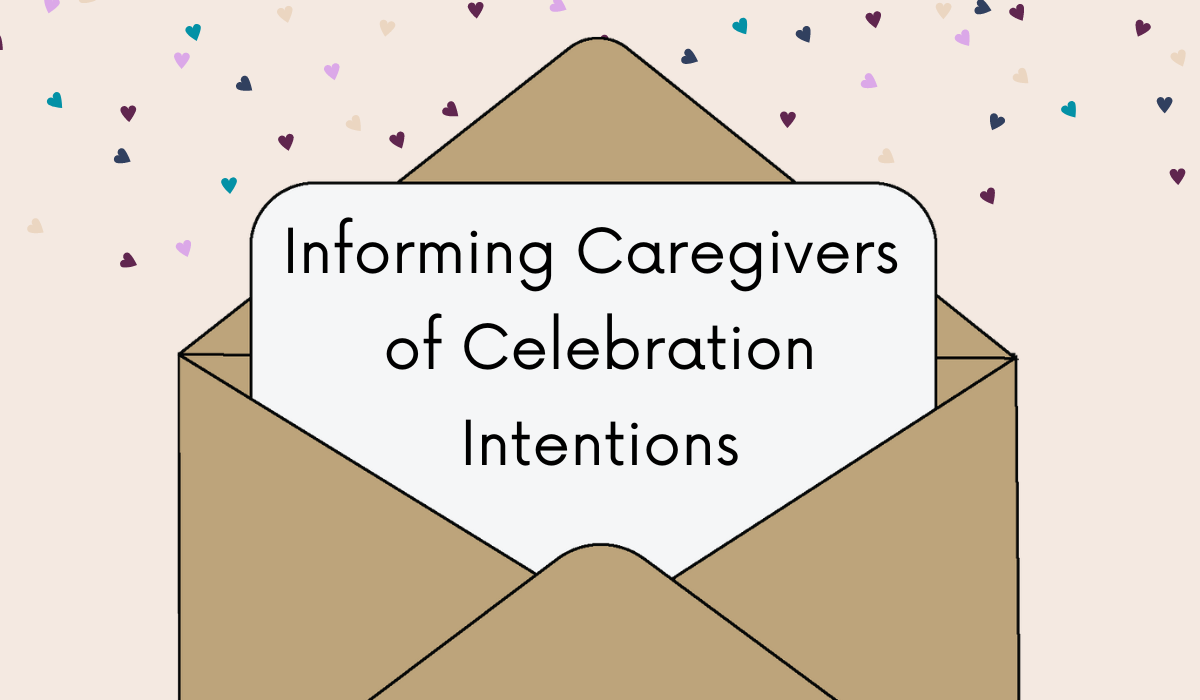
Informing Caregivers of Celebration Intentions
#3 – Alerting caregivers as early as possible. Yes, it is on every person’s calendar, but with all the other things on an adults calendar, Valentine’s Day in likely lost in the chaos. In addition to that, letting the caregivers know sooner rather than later can allow for them to plan ahead in a couple of ways. First, they can set aside money from a paycheck or make other arrangements to get the supplies their student needs. Second, they can let the teacher know about any religious or cultural objections they might have to their student participating in a classroom party or activities. Then, the two of you can brainstorm ways to ensure the not only their student, but all students feel welcome and included not unwelcome and excluded.
These are not perfect solutions by any means, but they are a place to start the conversation. They are points to consider when planning your students’ “Valentine’s Day” celebration.
I would love to know if you already do any of these things or have other suggestions. Send me a DM on Instagram or a message on LinkedIN.
Remember to center equity, celebrate diversity, and value culture!
Jocelynn
Is this the type of classroom you always dreamed of having? If so, you’re in good company. Let’s create this reality together. Check out the many on demand courses, teaching resources, and coaching options available:

